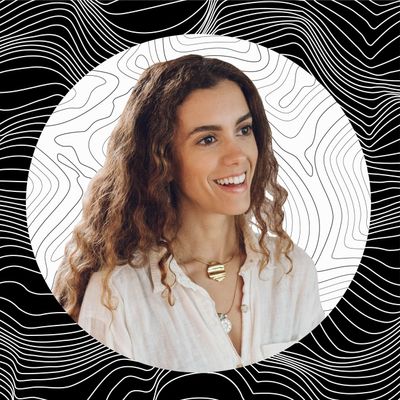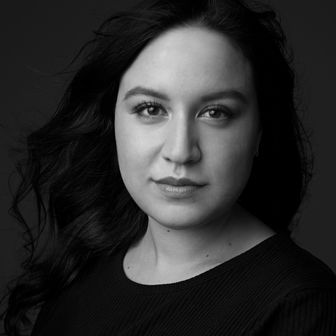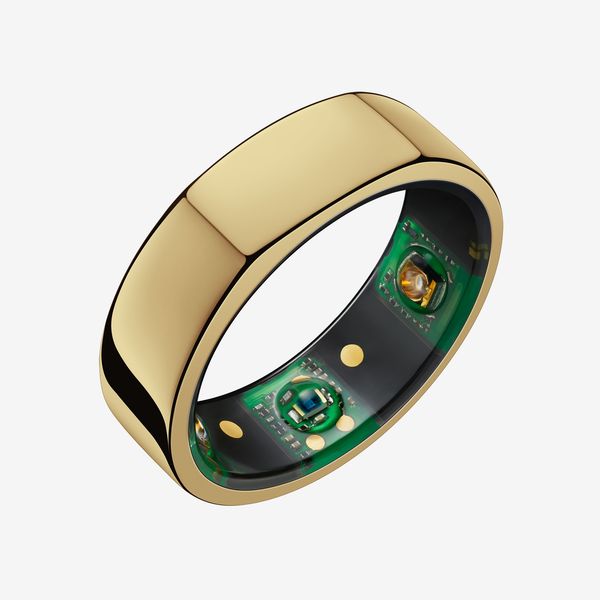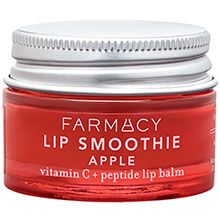
Tonya Papanikolov could talk about mushrooms for hours. “We’re in this moment in time where we’re understanding the role that they play in the biosphere and asking, ‘What would our planet be like without this life-form?’” she says. “Well, it wouldn’t really exist in this capacity, because they do so many things.”
A holistic nutritionist, Papanikolov harnesses the power of fungi for her company Rainbo, which makes potent tinctures from medicinal mushrooms like Cordyceps, reishi, and lion’s mane. Below, Papanikolov talked to the Cut about adaptogens, yoga, and the Sedona method.
On how she defines wellness: It’s a holistic connection between all of the different aspects that feed into my being: physical, mental, emotional, and spiritual. I’m trying to really find some form of equilibrium and harmony. When I was younger, my approach to wellness was maybe a bit more food-based. I was really focusing on the physical body.
Wellness can sound so blegh. It’s been so commodified, but at its roots, is something inherently human that all of us are seeking. It’s this inescapable thing that we know exists, but because of the industry that’s been created around it, for better and worse, it seems unachievable. It’s a challenge.
On how the last year has affected her: The pandemic has been very challenging for my mental wellness. Canadian winters are super tough. It just felt like all I could do was stay inside the four walls of my apartment. We could go on walks outside, but there wasn’t that much else to do other than work. I know that a lot of people were in a similar position, and I feel so lucky to not have had COVID, and yes, staying indoors really helped with that, but I would say the mental aspect has been the biggest struggle.
On trying to quit caffeine: Coffee feels like this ex-partner, this lover that you’re on and off with, and you’re like, “Why won’t you love me?” Because of my gut and irritable bowel syndrome (IBS), it just does not work for me. It makes me go to the bathroom like six times immediately. I get jitters. There are times when it doesn’t do that, but if I’m in a stressful period, it’s like an absolute no-go. So I quit.
Instead, I drink Bengal Spice, which is a spicy tea, and I drink matcha. Actually, I quit matcha — and any form of caffeine — for a while just to test out how I would do, and I was okay. When I quit coffee, I had withdrawal symptoms — I had headaches for weeks, and it was really brutal. The first few days I quit matcha, I was a little bit more tired, but then I found my natural source of energy, and it was great.
On making her own nut milk: It can be very hard to make nut milk at home because they get so slimy. I think the easiest one is either hemp milk or cashew milk because you don’t need to strain them. I do one cup of either a seed or a nut, let that soak overnight (or for a few hours), and then add three or four cups of water. Blend that, and I would recommend giving it a little stir before you pour it because the bottom can be thick. You can throw a pinch of salt in, you could put a date in, or you can drink the pure plain milk. It’ll keep for about three to four days. As soon as you learn how to do it quickly, it’s effortless and truly so much better than the store-bought stuff because it doesn’t have any of the gums and preservatives.
On (mostly) intuitive eating: I have a really sensitive body, and I have a whole theory about it. My parents grew up in Macedonia, both of them — our whole family’s from there. My sister and I are first-generation Canadians, and we were eating the standard American diet for the first time in the history of our ancestors. For example, my mom grew up on a mountain literally drinking milk from goats. It was a very clean diet and very different than what my sister and I were exposed to. Our parents were doing our best, but I would say for me, it was just the environmental exposures and diet that set my microbiome up in a particular way, and it’s said that your microbiome is really formed within these first seven years of life — you can absolutely augment it, and change it, and work with it, but it kind of stays with you for the rest of your life. And so a lot of my health challenges have been centered around the microbiome and IBS and related to eating specific foods. That was what led me to my curiosity about nutritional science.
I’ve been vegetarian for almost 15 years, and then I go through spurts of veganism — I’ve been introducing eggs again. I have an allergy to dairy so I don’t really do cheeses, and I definitely feel better when I’m mostly paleo. I don’t do too much grain because I feel bloated a lot easier that way. For the most part, my diet is intuitive — I still really like French fries.
I will say that if I had to choose a last meal, I would want my grandma’s spanakopita. She made it growing up, and it’s unbelievable. It’s in the shape of a pizza and cut like a pizza, but it has these flaky layers of phyllo pastry that get really crispy. There’s spinach and feta cheese in the middle, and there’s so much butter. She hasn’t been making it, but I do have the recipe, and I would do it, but I don’t usually cook with white flour.
On the power of yoga: I’ve been practicing yoga for a long time. When I was in my early 20s, I tried working at a corporate job. I was working in fashion, and I loved it, but I was stressed beyond what I could imagine. Then I found yoga, and my life started to change.
I studied many different types of yoga poses and did various teacher trainings to go deeper into the philosophy and the history. But in my physical practice, I was injuring myself. I was also looking for a more spiritual practice because, for me, there’s this quest for these higher states, beyond living in our egos. I really believe that at its core, wellness is spiritual. That is an integral part of life that we just don’t have words for in the Western world. It’s not religion. We have religion here, but a lot of us aren’t looking for organized religion. We just don’t have something in place for exploring the process of existing as a spiritual being.
Now I’m super into my relationship with kundalini, which is a form of yoga and meditation that also includes pranayama, or breathwork, and brings in the power of mantra and sound. It’s a different type of yoga than hatha, which is a much more physical practice. Kundalini is a bit more about getting into the meditative mind, and I do it for the mind, body, and spirit connection.
I had a really profound experience with kundalini when I first tried it — it was honestly one of the most mystical experiences of my life. When I moved to L.A. for a little while, I went into a kundalini studio. I had no idea what it was, and we were doing a 31-minute meditation. We had a very repetitive mantra that everybody was chanting, and during this meditation, I experienced a sound current that I felt like I had heard a million times in previous lifetimes. I felt deeply connected to it, and I felt like I was listening to the voice of a teacher. My experience was this mantra traveling through space, and coming into my crown chakra and traveling down into my heart. It was really, really painful, actually. I was really uncomfortable, and there were tears streaming down my face — not that I was sobbing, I wasn’t crying at all; my face was just wet. I was like, “What is going on? This is insane.” But I tried to quiet that down and immerse myself in the experience because I was like, “Something’s happening.” The mantra became hypnotic, really, and it pierced my heart and cracked it open, and then I had this feeling of absolute bliss. It was like a dissolution of any physical body and merging into some infinite source of something. I was so blown away by that experience, and have had a lot of really elevating experiences since.
On the magic of mushrooms: We don’t have the wisdom of elders here because of colonialism — we aren’t attuned to Ayurveda or traditional Chinese medicine, for example. So I think that adaptogens, and the wellness industry, have become really big because the Western culture is a relatively unhealthy culture. All of these other ancient cultures have ways and words to describe the connection between the mind, body, and spirit, and it’s something that’s really lacking for us. I think the stress we face, the foods we eat, the environmental toxins, all of that stuff, on a macro scale has led us to be like, “Wow, we need to feel better.” And plants can help us do that. From that perspective, people are looking for ways to manage the chronic stress that comes from being overworked and not connected to nature and our environment.
Mushrooms are a really incredible life-form and kingdom, and I think they’ve been unrecognized and overlooked. They offer so many different solutions for potentially cleaning up the environment, degrading plastics, helping soil runoff, protecting habitats, and restoring soils. And we’re also starting to understand how to utilize them in different applications. Medicinal mushrooms have been used for millennia by Indigenous people and traditional Chinese medicines. Then when penicillin (which is derived from Penicillium ascomycetous fungi) was discovered, that formed a huge basis for our modern medicine.
On taking cold showers: If you want radiant skin, cold showers are an absolute must. My partner and I have some friends who started a cold-therapy business — you switch between the sauna and an ice bath. It’s an incredible mental challenge to stay in there for two minutes, but there’s a ton of amazing health benefits from either a cold shower or ice baths — it’s so incredible for the metabolism, for immunity, for inflammation, if you have arthritis. Honestly, cold showers are harder than ice baths for whatever reason; maybe it’s the way the water hits the body.
On the Sedona method: This is a method that I learned from my therapist, and it’s basically a method of releasing traumas and the repetitive patterns that don’t serve us. It’s a releasing tool. You ask yourself three questions as part of a larger process of bringing awareness to whatever you’re going through. When you’re triggered, you take a minute to sit and ask, “Can I sit with this feeling of discomfort?” Then you literally say, “Yes.” “Am I willing to feel this?” “Yes.” “When am I willing to let this go?” Then you say, “Now,” and you visualize the weight of the emotions lifting. I imagine myself walking, and I repeat that process until I feel tangibly different. It’s very simple, and it’s very helpful.
Two Wellness Items Tonya Swears By
This is a little techie smart ring. It’s actually been so helpful because it tells you so much about your sleep data and reminds you if you’ve been sitting for too long. I’ve been really adamant about getting 10,000 steps a day — if I’m not exercising or sweating every single day, then I’m at least going on a really long walk or I try to take calls on walks. Oura has this amazing app — I’ve heard some people say that they like it better than the Apple Watch — and it tells you everything. It goes so in-depth on your sleep — how long you were in deep sleep, how long you were in REM. It measures your HRV and respiratory rate. It’s been useful data for me to actually implement real change — like saying, “Okay, I need to go to bed earlier.” Without seeing the data, it would be harder for me personally to make the decision to make some of these shifts.
At Rainbo, we rely on reishi, Chaga, turkey tail, Cordyceps, and lion’s mane for our single-mushroom products. Then we have 11 different mushrooms in our 11:11 tincture. I mainly put our tinctures in drinks. Every single morning, I have four to eight milliliters in either a glass of water or I put it in my matcha or latte of some sort. If I’m traveling or if I’m trying to boost my immunity, then I take it straight under my tongue.









